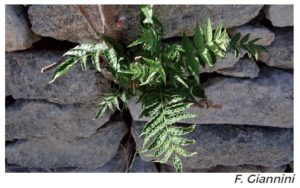 Common name: Ailanthus
Common name: Ailanthus
Scientific name: Ailanthus altissima
Brief description: This is a fast-growing species and can reach 15-24 metres in height. The inflorescence is very obvious and the fruit contains a single seed, but just one plant can produce an enormous amount of fruit. Ingestion of the leaves can cause intoxication and occasionally contact can cause dermatitis.
Biology and ecology: It tolerates various climatic conditions, including drought, is able to develop in areas with scarce and nutrient-poor soil and can grow in polluted environments. It produces by vegetative means or through the production of roots from fragments that break off from the mother plan.
Distribution in the Tuscan Archipelago and introduction: In the 700s it was introduced in Italy with the intention of disseminating the rearing of Ailanthus silk moths (Samia cynthia) to replace the silkworm. In the Tuscan Archipelago it is present on the Islands of Elba, Gorgona and Giglio, while on Capraia, Pianosa and Montecristo it has been subject to intense removal activities.
Impact: Globally this species is one of the most problematic and numerous containment operations have already been undertaken, not all successfully. With its roots, the ailanthus produces a substance called “ailanthone” which impedes the growth of other species, threatening natural ecosystems and changing their structure and composition.
Management in protected areas: In the protected area of the Archipelago the first concrete actions were undertaken on Capraia in 1998 and is has now almost been eliminated from the island. At Montecristo, with the project “Montecristo 2010”, the plant has been heavily controlled and at Pianosa it has practically disappeared.




